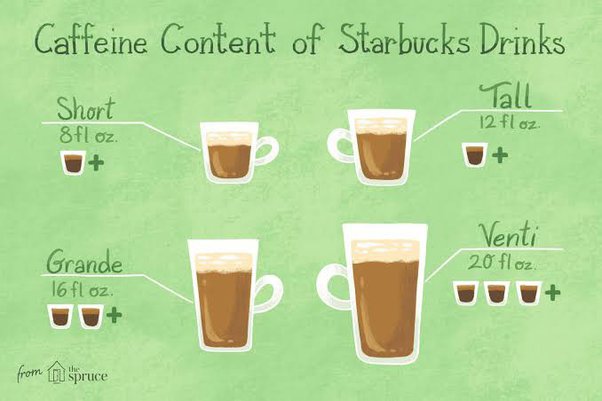Most Starbucks Frappuccinos contain caffeine, except for a few flavors that are caffeine-free. The caffeine content varies depending on the type and size of the Frappuccino.
Starbucks Frappuccino, a line of icy, blended drinks, combines coffee, milk, ice, and various flavorings to create a tempting treat. These beverages cater to a wide audience, ranging from coffee enthusiasts to those seeking a sweet indulgence. While coffee-based Frappuccinos deliver that caffeine kick many crave, Starbucks also offers options without coffee for those who prefer to avoid it.
The customizable nature of these drinks means you can adjust the caffeine level to your liking, either by choosing a specific coffee blend, opting for decaf, or selecting a cream-based variant. The choice allows customers to enjoy a Frappuccino experience tailored to their personal taste and caffeine sensitivity, making it a versatile option for any time of day.

The Frappuccino Phenomenon
The Frappuccino Phenomenon has captivated coffee lovers worldwide. Originating from a blend of frappe and cappuccino, it’s now a staple at Starbucks.
Delving into its brief history, the Frappuccino was created by The Coffee Connection, later acquired by Starbucks. It quickly became a global sensation.
Moving on to key ingredients and variations, the classic Frappuccino includes coffee, milk, ice, and flavored syrup. Varieties abound, from caffeine-free to those with a coffee kick.
| Type | Caffeine Content |
|---|---|
| Coffee-based | Varies by size |
| Creme-based | Often caffeine-free |
Note that some special flavors, like the Pumpkin Spice Frappuccino, contain coffee inherently. Always check Starbucks’ nutritional information for accurate caffeine content.

Caffeine In Our Diet
Caffeine is naturally found in many foods and drinks, including coffee, tea, and chocolate. Frappuccinos, a popular Starbucks beverage, contain varying amounts of caffeine depending on the flavor and size.
Understanding the health effects of caffeine is important for making informed dietary choices. Regular caffeine intake can lead to increased alertness and concentration. Yet, excessive consumption might cause anxiety, restlessness, and disrupt sleep patterns. The FDA suggests a limit of 400 milligrams of caffeine per day for adults, equal to about four or five cups of coffee.
For children, caffeine intake should be much lower and parents should monitor their kid’s consumption. Each person’s sensitivity to caffeine can vary, which makes individual tolerance vary. Check with a health professional to understand personal recommendations.
| Age Group | Daily Caffeine Limit |
|---|---|
| Adults | Up to 400 mg |
| Children | Significantly lower |
Breaking Down The Buzz
Many Frappuccinos at Starbucks contain caffeine, typically from coffee or tea. A standard-sized Frappuccino has roughly 90-95 milligrams of caffeine. This number can vary with different flavors and customizations.
The caffeine level is less than a regular cup of coffee, which has about 95-200 milligrams. Yet, it’s more than a can of soda, with 20-40 milligrams. Chocolate also adds a small caffeine boost.
Decaffeinated Vs. Regular Frappuccinos
Decaf options for Frappuccinos are indeed available. Starbucks offers a decaf espresso shot. Pick your favorite from the menu. Ask the barista to use a decaf shot. This way, you can enjoy a Frappuccino without the caffeine buzz.
Between decaf and regular Frappuccinos, taste differences can be subtle. Yet, texture might change slightly. Due to the different brewing process, decaf could alter the overall mouthfeel. Remember, the classic Frappuccino kick comes from caffeine. With decaf, that kick will be missing. But the creamy goodness remains. Savor it for its flavor, not the jolt.
Making Informed Choices
It’s vital to read labels and ask staff about caffeine content in drinks. Most Frappuccinos do contain caffeine, since they often include coffee or chocolate. The caffeine amount varies, depending on the size and flavor.
De-caffeinated alternatives are available and fruit-based options usually lack caffeine. To minimize caffeine, choose a Frappuccino with non-coffee bases like vanilla bean or strawberry.
The Future Of Frappuccinos
The frappuccino market is buzzing with innovation. Many coffee lovers want to know: does frappuccino have caffeine? Yes, classic frappuccinos do have caffeine, though amounts can vary. New products cater to those seeking health-conscious options, like caffeine-free versions.
Recent trends suggest that consumers prefer ingredients they recognize and trust. As a result, companies now incorporate organic coffee and alternative milk options into their recipes. These changes reflect a move towards healthier and more sustainable choices.
Frequently Asked Questions On Does Frappuccino Have Caffeine
How Much Caffeine Is In A Frappuccino?
A Starbucks Frappuccino typically contains between 65 to 100 milligrams of caffeine per 16-ounce serving. The exact amount can vary based on the flavor and customization options.
Which Frappuccino Has No Caffeine?
The Creme Frappuccino line at Starbucks offers caffeine-free options. Enjoy a Vanilla Bean, Strawberry Creme, or White Chocolate Creme Frappuccino without caffeine.
Does A Starbucks Frappuccino Have Coffee In It?
Some Starbucks Frappuccinos contain coffee, while others are coffee-free. Check the menu description to confirm if your chosen Frappuccino includes coffee.
Does Frappuccino Mean No Caffeine?
No, “Frappuccino” does not inherently mean caffeine-free. Many Frappuccinos contain coffee, hence caffeine, but caffeine-free versions are available.
Conclusion
To sum up, Frappuccinos do indeed contain caffeine, appealing to those who enjoy a boost with their sweet treat. It’s essential for consumers to understand the caffeine content to suit their preferences and dietary needs. Always check the specifics of your chosen Frappuccino to ensure it aligns with your lifestyle.
Whether seeking a jolt of energy or simply indulging in a flavorful beverage, Frappuccinos offer both.

